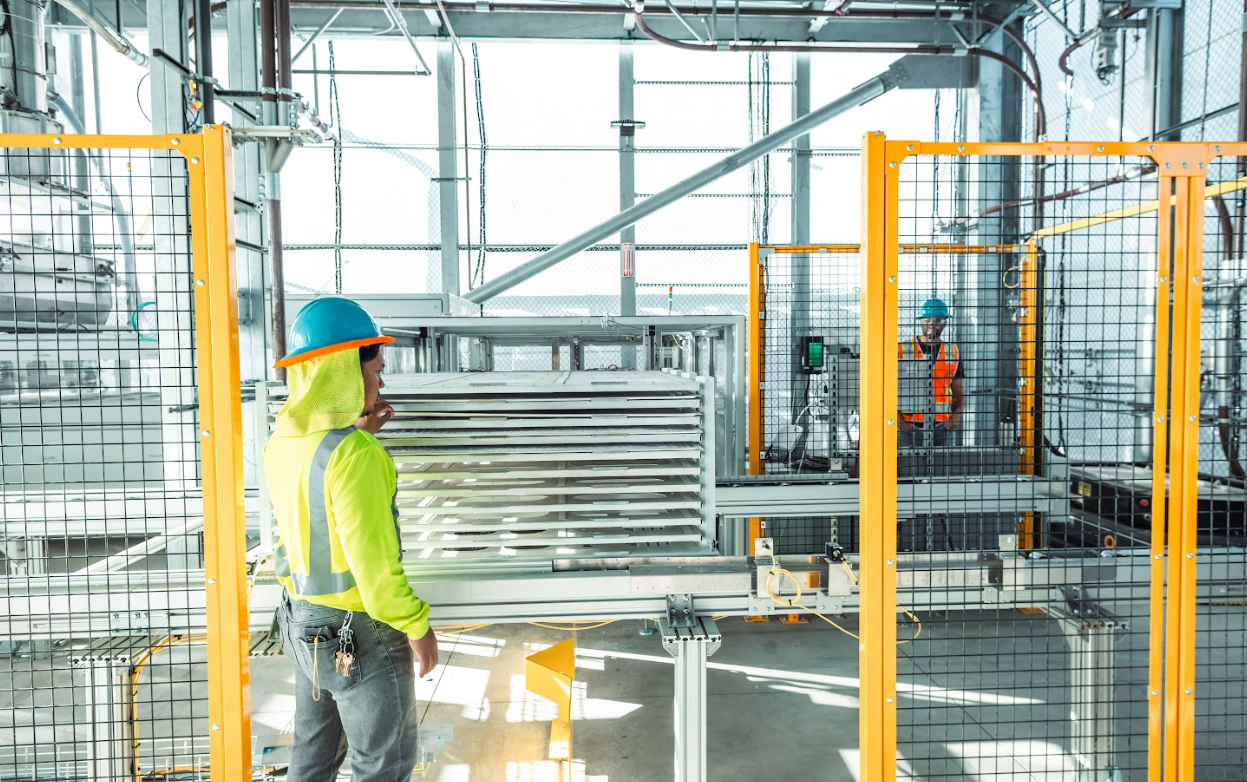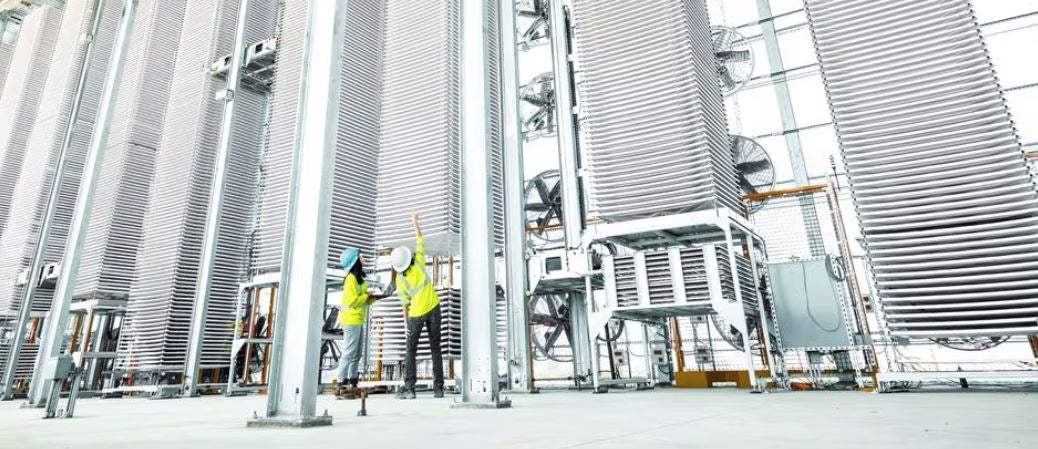
The fight against climate change demands constant innovation, especially in reducing greenhouse gas emissions. Capturing excess carbon dioxide (CO2) from the atmosphere has emerged as a crucial weapon in this battle. The ambitious plans of Heirloom and CapturePoint, two companies at the forefront of carbon capture technology, aim to make a significant impact in Louisiana.

Heirloom and CapturePoint: A Powerful Partnership
Heirloom and CapturePoint are joining forces to tackle CO2 emissions in a big way. Heirloom is a trailblazer in Direct Air Capture (DAC) technology, which extracts CO2 directly from the air. They even operate the first commercial DAC facility in the United States. CapturePoint, on the other hand, is an expert in transporting and storing captured CO2 deep underground. Their collaboration focuses on Louisiana, with plans to build DAC plants and utilize CapturePoint's existing infrastructure for safe and permanent CO2 sequestration.
The Advantages of Direct Air Capture (DAC)
DAC technology offers a distinct advantage over other carbon capture methods_. Unlike methods that capture emissions directly from industrial facilities,_ DAC tackles CO2 already present in the atmosphere. This makes it a powerful tool for addressing the existing burden of greenhouse gasses.
Heirloom's Innovative DAC Technology
Heirloom isn't just a pioneer in DAC; they're also constantly pushing the boundaries of the technology. Their DAC units are designed for efficiency and boast impressive capacities. The first Heirloom facility planned for Louisiana, located in the Port of Caddo-Bossier, is expected to be operational by 2026 and remove a significant 17,000 metric tons of CO2 from the atmosphere annually.
Project Cypress: A Multi-Phased Approach to CO2 Capture
But Heirloom and CapturePoint's vision extends far beyond a single facility. Project Cypress, a multi-phase initiative managed by the U.S. Department of Energy, is a testament to their ambition. This project involves constructing a second, much larger Heirloom DAC facility in phases. Each phase of Project Cypress is designed to capture a staggering 100,000 metric tons of CO2 annually, making the total capture capacity a remarkable 300,000 metric tons once complete.

>> In Other News: Goldenstone Acquisition Limited. and Infintium Fuel Cell Systems, Inc. Announce Definitive Business Combination Agreement
Strategic Locations for Long-Term Success
The chosen location of the DAC facilities, the Port of Caddo-Bossier, is not without strategic merit. The port's geographic and economic significance make it an ideal hub for DAC plants. Existing infrastructure allows for efficient logistics and simplifies the transportation of captured CO2.
On the other hand, CapturePoint's CENLA Hub plays a vital role in the project's success. This underground storage facility ensures the safe and permanent sequestration of captured CO2, a critical step for long-term environmental benefits. Onshore carbon sequestration, compared to offshore storage, offers greater security and reduces environmental risks.
Environmental Benefits: A Breath of Fresh Air
The environmental impact of Heirloom and CapturePoint's collaboration is undeniable. By removing substantial amounts of CO2 from the atmosphere, these projects have the potential to make a significant dent in local and global CO2 levels. This contributes significantly to mitigating climate change and its devastating effects. The long-term benefits of CO2 sequestration cannot be overstated, as it helps combat rising temperatures and ocean acidification.
Economic and Social Implications: A Win-Win for Louisiana
The economic and social implications of these projects are equally promising. The construction and operation of the DAC facilities and the CENLA Hub are expected to create a substantial number of direct and indirect jobs. This translates to economic growth for the region and fosters development. Additionally, these projects position Louisiana as a leader in clean technology, potentially attracting further investments in this critical sector.
The positive impact extends beyond the economy. The development of these facilities is likely to lead to improvements in local infrastructure. Cleaner air, a direct result of reduced CO2 levels, can also have a positive impact on community health and the environment.
Future Prospects and Challenges: Scaling Up for Success
Looking ahead, Heirloom and CapturePoint envision a future with even more DAC facilities boasting even greater capture capacities. However, scaling up this technology presents both technical and logistical challenges. Technical hurdles need to be overcome to ensure efficient operation at a larger scale. Similarly, transporting and storing vast amounts of captured CO2 requires innovative logistical solutions.
Finally, continued government and policy support are crucial for the long-term success of these projects. Changes in regulations could significantly impact their viability. A stable and supportive regulatory environment is essential for encouraging continued investment and innovation in carbon capture technology.
Subscribe to the newsletter
Daily decarbonization data and news delivered to your inbox
Follow the money flow of climate, technology, and energy investments to uncover new opportunities and jobs.
Latest issues
-
How 45Q Credits Revived This Troubled $9B Megaproject
Inside This Issue 💰 How 45Q Credits Revived This Troubled $9B Megaproject 🍁 Commencement of First Phase Operations for a Carbon Capture and Storage (CCS) Project in Canada 🤝 Haffner Energy Secures...
-
The Deal Structure Everyone's About to Copy
Inside This Issue 💼 The Deal Structure Everyone's About to Copy 📈 Exxonmobil Raises Its 2030 Plan – Transformation Delivering Higher Earnings, Stronger Cash Flow, and Greater Returns ⚡ Nextera Wor...
-
Inside XCF Global's $300M Bet to Double U.S. SAF Output
Inside This Issue ✈️ Inside XCF Global's $300M Bet to Double U.S. SAF Output ⚙️ Capsol Technologies Signs MoU with US Utility to Deploy CapsolGT® for Low-carbon Gas Power Generation 🏭 Babcock &...
Company Announcements
-
Clean Planet Technologies (CPTech), part of the Clean Planet Group, has announced that its core pyrolysis-oil upgrading process has now been formally patented in both the United States and Saudi Ar...
-
(December 12, 2025 - Oslo, Norway) Nel ASA (Nel, OSE: NEL) is pleased to announce that following a seven-year development program, and now a successful start-up and production of clean hydrogen on ...
-
Hydrogen Technology Venture Launches in Bowling Green
BOWLING GREEN, Ky. — A new tech company is coming to Bowling Green, bringing dozens of jobs to Warren County. What You Need To Know UFS ARK will be a joint venture of United Fiber Sensing and OgM...
-
HyOrc Positions Green Methanol as the Economic Solution to Shipping’s Decarbonization Challenge
HOUSTON, Dec. 12, 2025 (GLOBE NEWSWIRE) -- HyOrc Corporation (OTCID: HYOR), a fully SEC-reporting clean-energy company focused on decarbonizing heavy industry, today commented on the growing global...